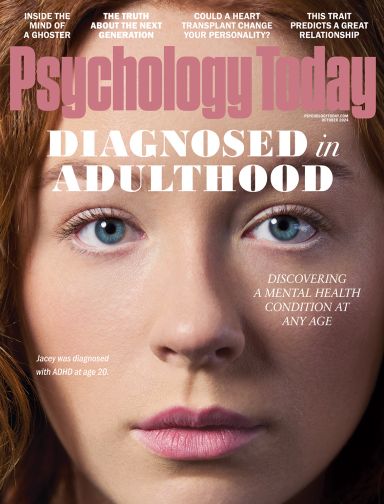Left Brain - Right Brain
Brainwaves Different in People Addicted to Internet Gaming
Stronger brainwaves connecting left and right brain in Internet gamers.
Posted May 7, 2017
Researchers reported this week in the journal Scientific Reports that they are able to identify differences in brain connectivity in people who are addicted to Internet gaming. Most appropriately, scientists are able to do this by tapping into the brain’s Wi-Fi-like electrical signals radiating through gamer’s skulls. After sampling only 10 minutes of brainwave patterns picked up by electrodes on the scalp while the gamer sits quietly doing nothing but letting his mind wander, the team of researchers at Seoul National University in Korea find that waves of electrical activity in the brains of people who are addicted to Internet gaming are different. (All of the subjects in the experiment were male.)
Waves of electrical activity sweep through the brain at different frequencies, changing with our state of arousal, emotion, thoughts, and unconscious and preconscious information processing. When electrical waves in two or more parts of the brain are oscillating in synchrony, neurons in those two spots are functionally connected. The interconnection may be through direct anatomical connections between neurons in the two regions, or through a complex and dynamically shifting network of indirect pathways that cause the two regions to operate together. The researchers found that brainwave activity in the 30-40 Hz band (gamma waves) is more highly interconnected between the left and right brain of gamers than in people who are not addicted to internet gaming.
Considering Internet gaming disorder as an obsessive, compulsive, or addictive behavior, the researchers hypothesized that people addicted to alcohol might share similar inter-cerebral hyperconnectivity in the gamma brainwave band associated with craving alcohol. This is reasonable, considering that brain circuits involved in addiction, reward, and impulsive behaviors are involved in both alcohol dependence and in a compulsion to engage in excessive internet gaming. However, the experiments found something different.
The brains of alcoholics did not exhibit higher intercerebral interconnectivity in the gamma band, but there was a tendency for somewhat higher intercerebral interconnectivity in the lower frequency theta band of brainwaves that oscillate at a frequency of 4-8 Hz in alcoholics. That difference between brainwaves in alcoholics compared to healthy controls was not as strong as the finding of stronger intercerebral connectivity in gamma brainwaves in people with internet gaming disorder.
The significance of this study, adding to a large number of other studies, is that much can be learned about how an individual’s brain is interconnected by monitoring how the brain operates when it is doing nothing. This resting state brainwave behavior reflects fundamental aspects about how a person’s brain is wired. The results showed that brain interconnectivity is different in compulsive internet gamers, alcoholics and healthy controls. This makes sense, when one considers that people dependent on alcohol are not necessarily also compulsive internet gamers, but this in itself shows how insightful this new ability to identify the neurophysiological basis of psychiatric and other mental attributes is, simply by hacking into the brain’s waves of electromagnetic energy radiating out of the skull in discrete frequency bands.
The functional interconnectivity between different brain circuits is what governs any complex cognitive function, or dysfunction. It is important to recognize that this circuitry is partly genetically predetermined and partly changed by experience. Only one of these is something that we can control. Interventions to correct alcohol dependence and internet gaming disorder will change brain wiring, and this will be reflected in changes in brainwave oscillations and synchrony. In the not too distant future, the effectiveness of treatments for such psychological disorders may be monitored, less by sessions on a psychiatrist’s couch, and increasingly by brainwave recordings.



